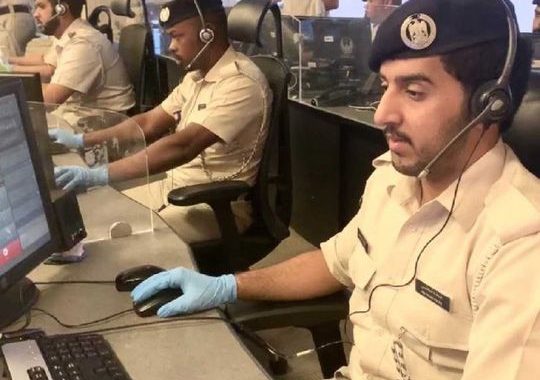‘No scar, virtually pain-free’: Robotic procedure treats Abu Dhabi woman with compressed vein

Abu Dhabi: Using robotic technology, a team of doctors and surgeons at Cleveland Clinic Abu Dhabi successfully completed a pioneering rib resection and vein analysis to treat venous thoracic outlet syndrome (VTOS).
This robotic procedure, which took two to three hours, was performed on a 22-year-old female patient.
Although there are few places in the world that perform this procedure automatically, this was the first operation performed by Cleveland Clinic Abu Dhabi, part of the M42 network, using this advanced technology.
Traditionally, the surgery is done through a large incision in the upper chest which requires extended recovery time and visible scarring. Using the robot, three one-centimeter incisions were made on the patient’s back to remove the part of the first rib that was causing a vein compression. This resulted in no visible scars and was virtually pain-free for the patient, without compromising the clinical outcome. The patient was discharged after spending two nights in the hospital.
⦿ The condition often occurs in young, active individuals engaged in repetitive arm movements, such as swimmers, baseball players, cricket players, and those involved in cross-fit training or who have a job that requires repetitive motion in the arm and shoulder. It can also occur among women aged 20 to 50.
⦿ Common symptoms and risk factors associated with the condition that are often ignored by patients include recurrent venous thrombosis, arm pain, and exercise-related thrombosis, as well as arm swelling, discolouration, and limb heaviness.
Early treatment is key Dr Houssam Younes, Staff Physician in the Heart, Vascular, and Thoracic Institute at Cleveland Clinic Abu Dhabi, said: “A person is more likely to get VTOS if they have a naturally narrow passageway for the subclavian vein.
Research shows that if a patient receives treatment within the first 14 days of symptoms appearing, the chances of a successful outcome significantly increase. Medication to dissolve blood clots is typically administered as a primary treatment, with surgery being considered in severe cases to widen the area around the subclavian vein.”
Robotic technology
Dr Usman Ahmad, Department Chair of Thoracic Surgery in the Heart, Vascular and Thoracic Institute at Cleveland Clinic Abu Dhabi, said: “This minimally-invasive technique offered at Cleveland Clinic Abu Dhabi allows for precise and targeted treatment, resulting in improved outcomes and faster recovery times for patients suffering from VTOS.”
“The use of robotic technology has revolutionised the way we approach complex vascular conditions like VTOS. By utilising this advanced technique, we can provide our patients with superior care, and deliver outcomes that were previously unattainable, allowing us to offer accessible healthcare to the community and wider region.”
He added: “Untreated VTOS poses risks due to potential blood clot formation in the subclavian vein. This compression can obstruct blood flow to the arm or hand or lead to a pulmonary embolism if the clot travels to the lungs. Individuals participating in regular exercise should be aware of the signs of VTOS and seek medical attention promptly if symptoms arise, to prevent complications.”




